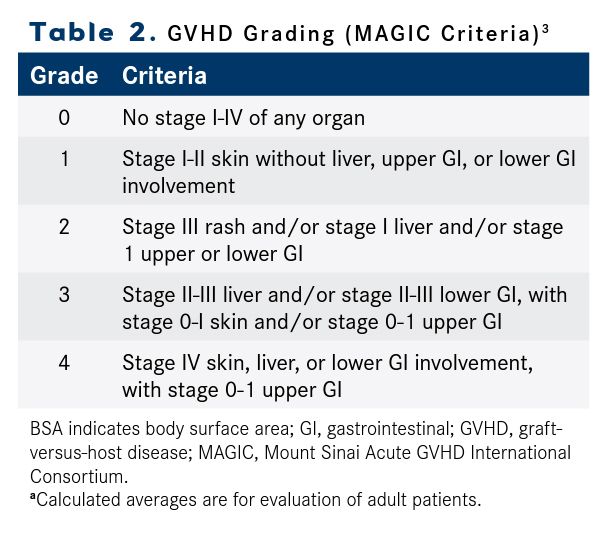Publication
Article
Oncology Live®
Taking a Practical Approach to Acute GVHD
Author(s):
Although acute graft-versus-host disease remains potentially fatal for patients who undergo allogeneic hematopoietic stem cell transplantation, prevention and treatment strategies for this complication are evolving.
Joseph H. Antin, MD, emeritus chief of stem cell transplantation at Dana-Farber and a professor of medicine at Harvard Medical School

Joseph H. Antin, MD
Although acute graft-versus-host disease (aGVHD) remains a potentially fatal development for patients who undergo allogeneic hematopoietic stem cell transplantation (allo-HSCT), strategies for the prevention and treatment of this challenging complication are evolving.
Two experts from Dana-Farber Cancer Institute discussed their approach to aGVHD during an OncLive Insights® video program. Joseph H. Antin, MD, is emeritus chief of stem cell transplantation at Dana-Farber and a professor of medicine at Harvard Medical School, both in Boston, Massachusetts. Corey S. Cutler, MD, MPH, FRCPC, is medical director of the adult stem cell transplantation program and director of both the stem cell clinical research and survivorship programs at Dana-Farber as well as an associate professor at Harvard Medical School.
What Is aGVHD and How Often Does It Occur?
Patients who undergo allogeneic bone marrow transplantation are at risk of developing an immune condition in which the transplanted donor cells attack the patient’s cells. A recipient’s risk of developing GVHD is associated with older donors, certain viral infections, and some treatment regimens, Antin said. The manifestation of aGVHD occurs within the first 100 days following transplant and is one of the leading causes of short-term mortality.1
“In essence what is going on is that the T cells that are transferred from the donor to the recipient recognize minor histocompatibility antigens in the context of a conditioning regimen and in the underlying inflammatory processes and then generate an immune response that’s essentially identical to what would be generated if there were an infection,” said Antin.
The skin, liver, and GI organ systems are targeted because their normal function is to generate immune response as a barrier to the environment and they have the highest percentage of dendritic cells, Antin noted.
Grading and Staging aGVHD
Cutler noted that staging and grading the reactions seen in the organ systems provide a way for transplant specialists to assess severity and potential clinical trial enrollment.2 “Each individual is given an organ stage based on the percentage of body surface involvement for the skin, on the volume of diarrhea, and the number of bowel movements per day for the intestinal tract, and the level of rise of bilirubin for the liver,” Cutler said. “We take the individual organ stages and come up with an overall grade of acute GVHD.”
Table 1. MAGIC Criteria for Staging GVHD3 (Click to Enlarge)

Table 2. GVHD Grading (MAGIC Criteria)3 (Click to Enlarge)

Management of aGVHD:
Standard of Care
Prophylactic therapy for patients undergoing allo-HSCT is a vital factor in managing GVHD. “All patients require some form of prophylaxis against GVHD,” said Cutler. “Most of us use pharmacologic prophylaxis, and the standard in North America still is a drug such as tacrolimus or cyclosporin in conjunction with methotrexate.”
The approach changes for aGVHD. “At [Dana-Farber], we typically use corticosteroids as the first-line therapy for acute GVHD, and we generally start at a dose of 1 to 2 mg/kg of body weight for recipients,” Cutler said. “For individuals who have skin disease only, we sometimes use lower doses, such as 1 mg/kg. But by and large, the standard of care at our center is 2 mg/ kg. There also is a role for topical therapy for the skin that involves topical steroids or topical immunosuppressants and even topical steroids for the intestinal tract in the form of nonabsorbable oral steroids.”
Antin pointed out that although transplantation has been used in practice for over 40 years there is still no standard schedule for duration of aGVHD treatment. “What has been accepted as a criterion for steroid resistance is when the patient’s condition deteriorates within 3 days or doesn’t respond within 7 days.
“For patients who are improving, we generally will continue them on the starting dose until things are under decent control: the rash is mostly resolved, or the diarrhea is substantially better. Typically, I will continue them on high doses of steroids until they’re still restarting to form stool, or at least until it’s become thick enough that it’s no longer like dysentery or pure water. And then we taper 10% per week or something of that order,” he said.
Second-Line Therapy
“It’s important to recognize that probably up to 50% of our GVHD patients at some time are going to require a second-line agent,” said Cutler. The factors that may lead to second-line therapy include steroid resistance and recurrence of aGVHD after steroids are tapered or the patient achieves a complete response.
“GVHD and the immunological response to infection are essentially the same thing, [so] you have to be very cautious about adding on immunosuppressants,” said Antin. Although it may be easy to continue stacking immunosuppressants or increase dosage, Antin cautions that this treatment pattern “paralyzes the patient’s ability to fight infection.”
“If you look through the literature, in the not-so-early days of transplantation, even up until relatively recently, what you can f ind is that many drugs will increase the response rate but fail to improve survival because the infection rate goes up very substantially,” he said.
The goal is to find ways to reduce the inflammatory aspects of GVHD without compromising the immune system. One way forward that Antin points out is the use of JAK inhibitors such as ruxolitinib (Jakafi). In May 2019, ruxolitinib became the first and only FDA-approved treatment for adult and pediatric patients 12 years and older with steroid-refractory aGVHD.4
“[The agent] will downregulate the body’s response to inflammatory cytokines without completely paralyzing the immune response,” Antin said. “You can use drugs like ruxolitinib in myeloproliferative disorders without making the patient immunocompromised, but if you abruptly stop them, the patient will get a rebound of inflammation that can be quite unpleasant. Therefore, by using that type of drug, we can suppress the inflammatory manifestations—some of the diarrhea, some of the rash—and hopefully allow the immune system to recover more naturally.”
Multidisciplinary Management
It is important to consider all components of care for patients with aGVHD and to utilize a multidisciplinary approach, according to Cutler. “We have to do meticulous wound care for skin disease. There’s the element of resting the intestinal tract and providing parenteral nutrition to feed the patients during their time course in the hospital with acute GVHD, and it’s really a multidisciplinary approach involving our dietitians, our physical therapists, our nurse colleagues, our research coordinators, and our research technicians, and couching expectations with the patients,” he said.
Antin added that it is important to bring in colleagues who specialize in infectious disease. “Even in the absence of GVHD, patients in the early stages after transplant are quite immunocompromised and are subject to all sorts of bizarre and unexpected infections,” he said. Pulmonary specialists may be called upon if pneumonia develops and dermatologists can be called in to advise on topical treatments that facilitate healing and reduce inflammatory manifestations of the skin, Antin added.
What Are the Next Steps?
Late-grade aGVHD has a poor prognosis, especially if it is resistant to first-line treatment. The development of treatment strategies will rely on reproducible identification of high-risk patients through clinical risk scores and biomarkers.
“Biomarkers don’t actually predict the onset or the incidence of GVHD, but they can predict its severity and transplant-related mortality,” said Antin. He added that biomarkers are currently useful to inform decisions regarding clinical trial enrollment. “For instance, if a biomarker is elevated and suggests that a patient is likely to have a high mortality related to GVHD, they might be eligible for an investigational study of more intensive immunosuppression. In contrast, if the patient had a low biomarker risk profile, then you probably would not want to start them on an investigational regimen, because they’re much more likely to respond effectively to corticosteroids.”
In discussing potential biomarkers, Antin noted the work of investigators at Mount Sinai Hospital in New York, New York. This includes the development of an algorithm using concentrations of 2 serum biomarkers, interleukin-33 and its receptor ST2, to stratify patients at risk of aGVHD of the GI tract.5
Investigational trials into potential biomarkers and novel treatment strategies are ongoing, but for now prevention is the first priority for patients who receive HSCT.
“This is the holy grail of transplantation: prevent GVHD, allow effective immune reconstitution, and provide an effective anticancer effect. [If we can do this] then we win, and our patients win,” Antin said.
References
- Holler E, Greinix H, Zeiser R. Acute graft-versus-host disease. In: Carreras E, Dufour C, Mohty M, et al, eds. The EBMT Handbook: Hematopoietic Stem Cell Transplantation and Cellular Therapies [Internet]. 7th ed. New York, NY: Springer; 2019:323-330. Chapter 43.
- National Comprehensive Cancer Network. Clinical Practice Guidelines in Oncology. Hematopoietic Cell Transplantation (HCT): Pre-Transplant Recipient Evaluation and Management of Graft-Versus-Host Disease (version 1.2020). nccn.org/professionals/physician_gls/pdf/hct.pdf. Updated October 30, 2019. Accessed February 26, 2020.
- Harris AC, Young R, Devine S, et al. International, multicenter standardization of acute graft-versus-host disease clinical data collection: a report from the Mount Sinai Acute GVHD International Consortium. Biol Blood Marrow Transplant. 2016;22(1):4-10. doi: 10.1016/j.bbmt.2015.09.001.
- FDA approves Jakafi (ruxolitinib) for the treatment of patients with acute graft-versus-host disease [news release]. Wilming-ton, Del: Incyte Corporation; May 24, 2019. bit.ly/2WiRktX-?rel=0. Accessed March 4, 2019.
- Ferrara JLM, Chaudhry MS. GVHD: biology matters. Blood Adv. 2018;2(22):3411-3417. doi: 10.1182/bloodadvanc-es.2018020214.
Several grading systems are available, Culter and Antin noted. MAGIC, which was developed in the past several years, incorporates bowel movements into the stratification factors, allowing for a “slightly more accurate way of grading and staging individuals,” said Cutler. (Tables 1 and 23). Increased uniformity in GVHD staging not only will make comparing results more streamlined, but also will allow for improvements in clinical trial reproducibility.3










